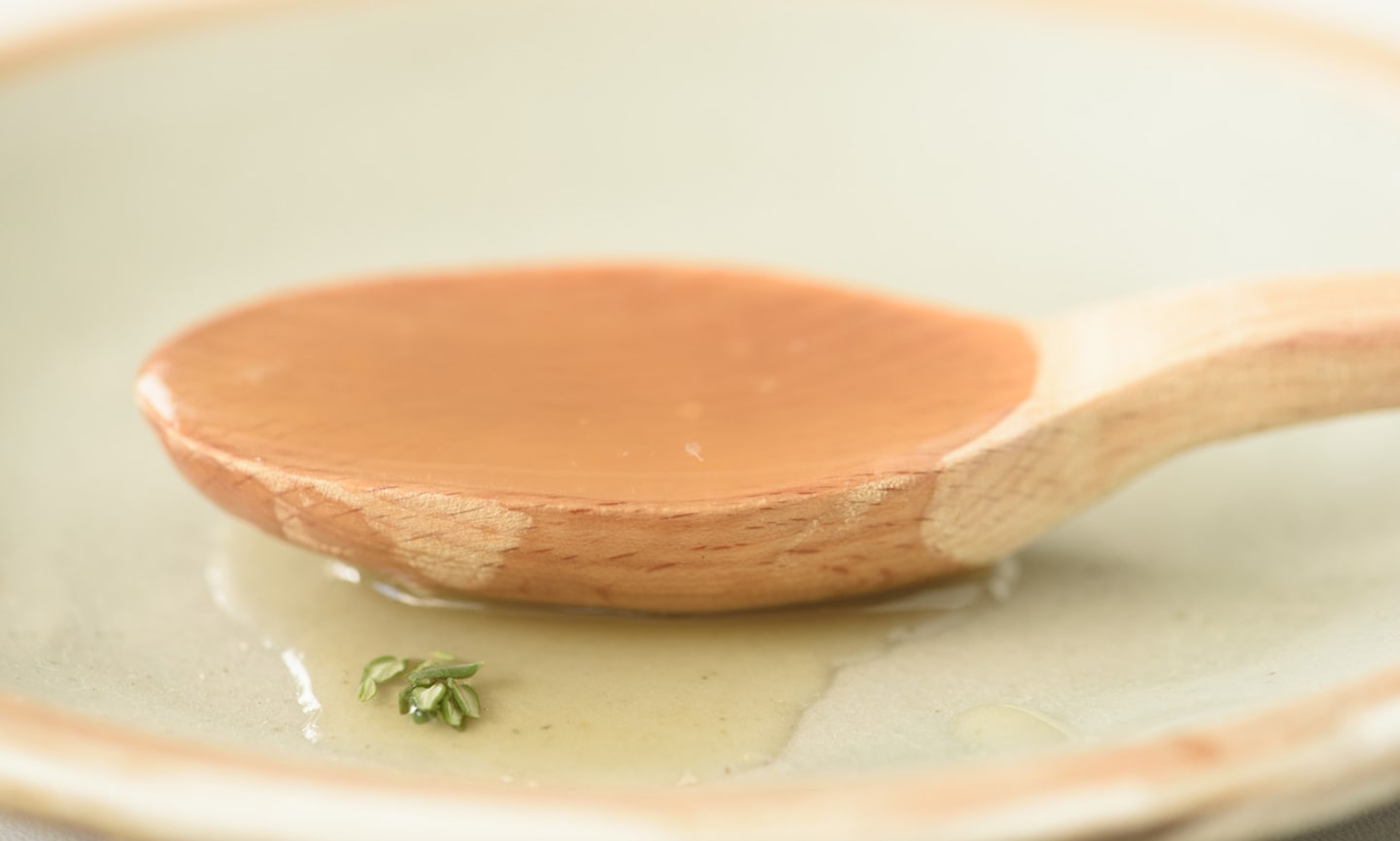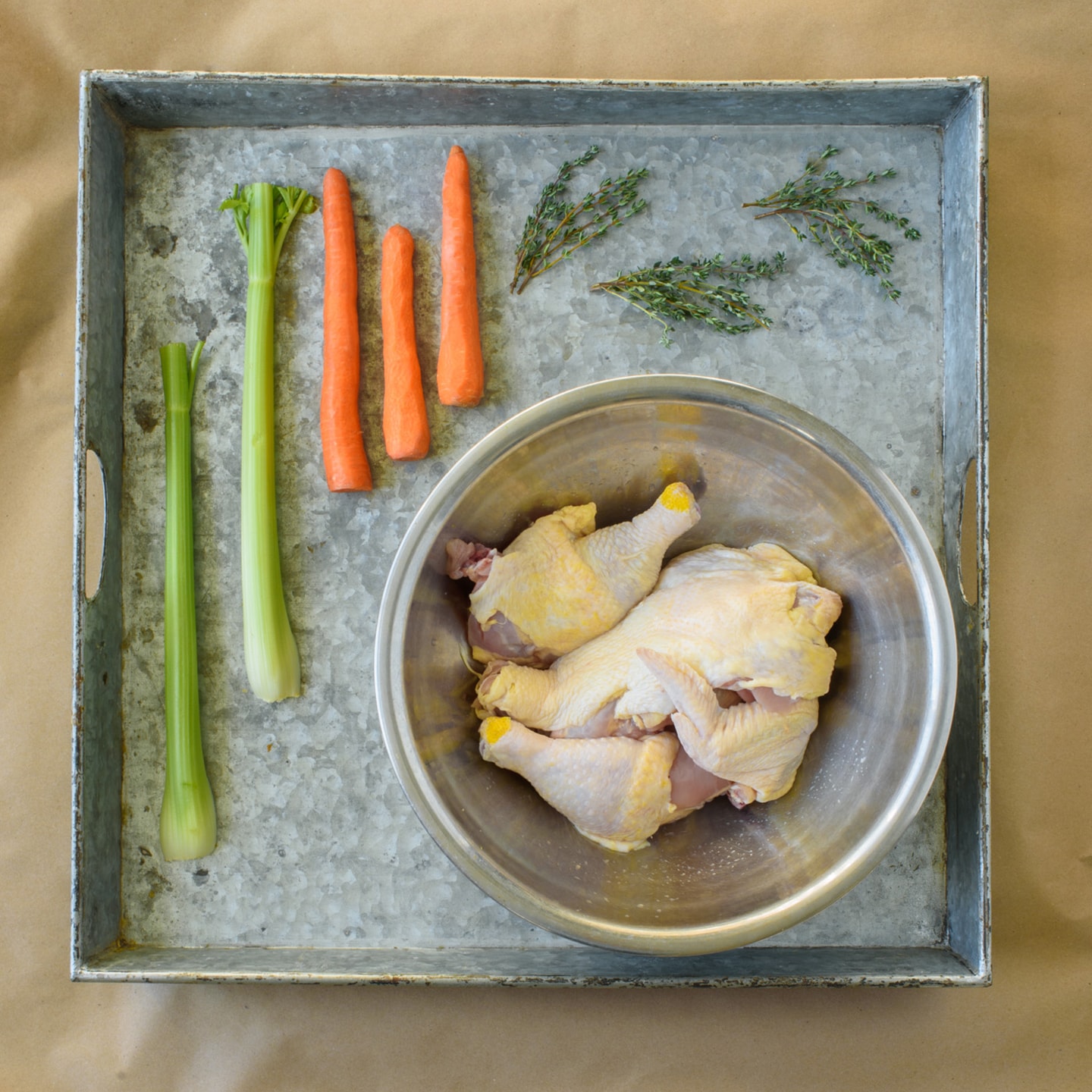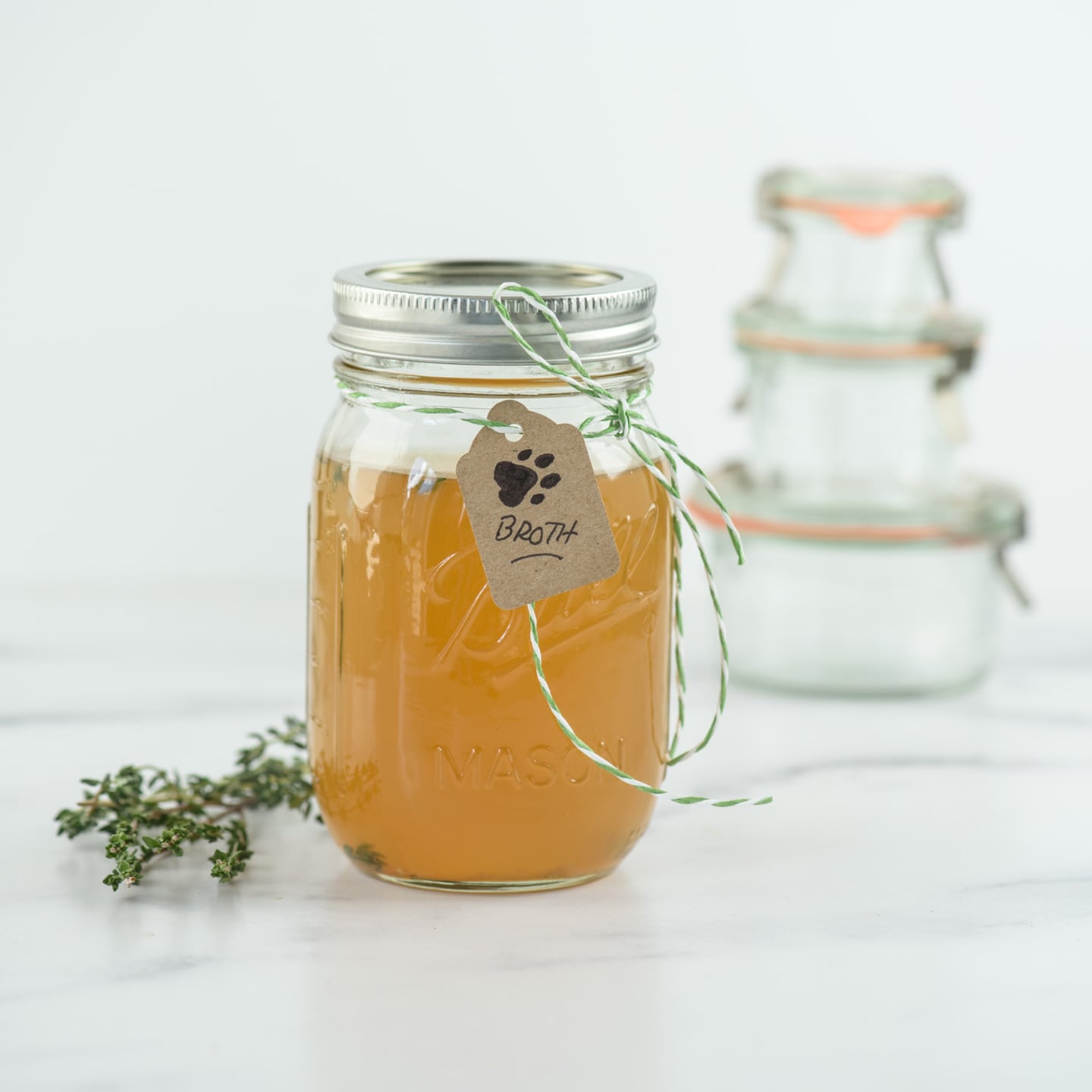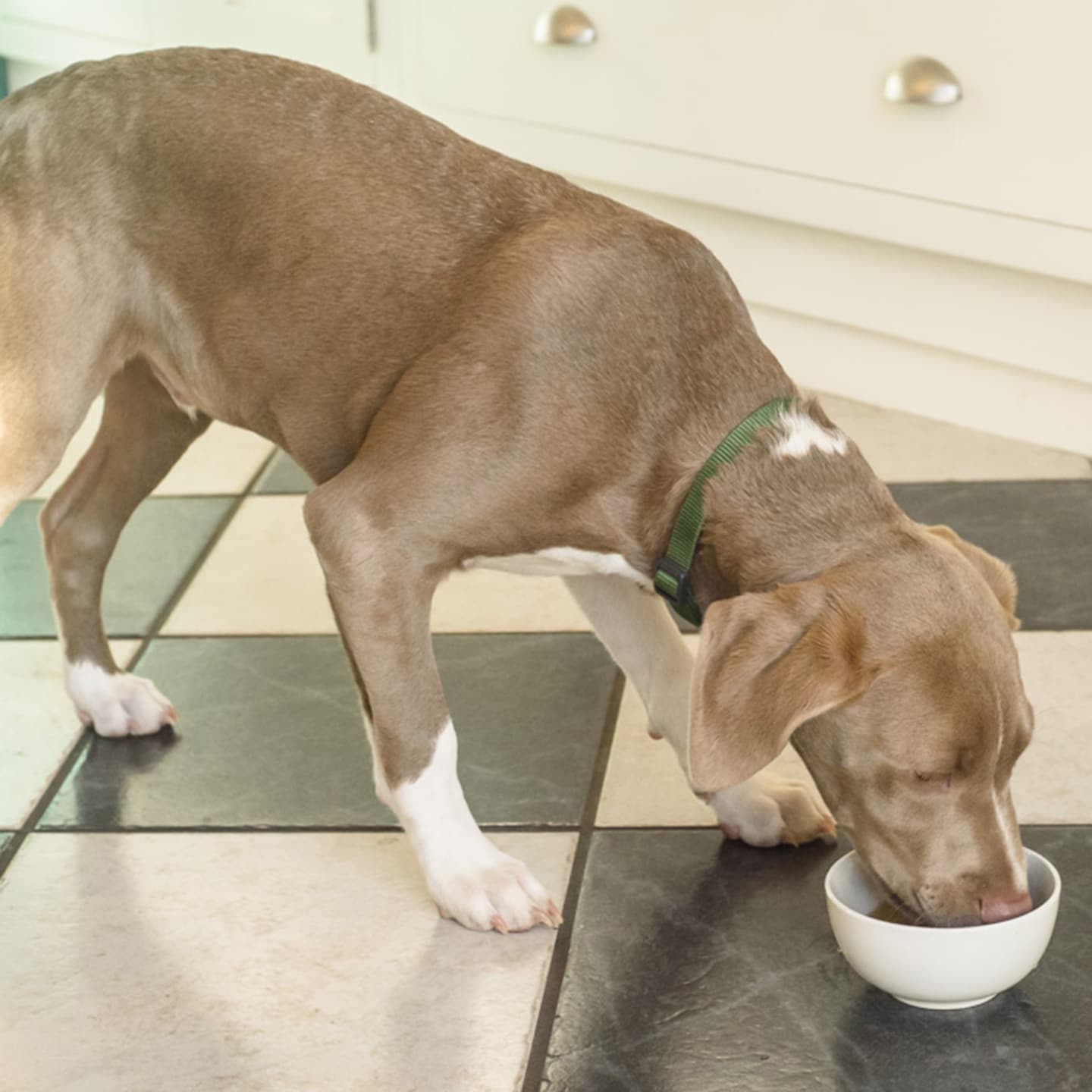If your pet has ever sat salivating next to you as you slurp up some silky-smooth homemade broth, good news for them: Bone broth is an amazing, nutrient-rich treat dogs and cats can enjoy, too. And the best part? It’s super easy to make at home. All you need is a handful of simple, pet-safe ingredients; an Instant Pot, slow cooker or stock pot; and a few other supplies you likely already have in your kitchen.
This dog- and cat-friendly recipe was created by Marge Perry and David Bonom, cookbook authors and Trunk Pop Dinners co-founders—and it might just be the tastiest way to get warm and cozy with our furry friends this winter.
Remember, pet parents looking to incorporate new foods in their dog’s diet should consult with their veterinarian beforehand.
Click on a button to jump to that section:
Belly-Warming Bone Broth Recipe

Yield:
About 6 cups
Serving size:
2 tbsp per 20 pounds of body weight
Prep time:
30 minutes (includes straining and skimming the fat)
Cook time:
2 to 8 hours, with an additional 30 minutes for cooling
Ingredients
4-4 1/2 pounds chicken backs, wings, drumsticks or thighs
2 carrots, peeled and chopped
2 celery stalks, chopped
3 sprigs fresh thyme
Water to cover, about 1 1/2 quarts
Supplies
Instant Pot, slow cooker or stock pot
Knife, Chopping board
Peeler, Strainer
Cheesecloth (optional)
Ice cube tray (optional)
Mason jars (optional)

Instructions
1Add the chicken, carrots, celery and thyme to the Instant Pot. Pour in enough water to cover the ingredients, about 1 1/2 quarts.
2For the Instant Pot:Cover and cook on high for 2 hours. Allow the Instant Pot to depressurize with a natural release. Once the Instant Pot is safe to open, remove the lid and let it cool for 30 minutes.
For the stock pot:Cook uncovered over low heat for 4 hours.
For the slow cooker:Cook covered on low heat for 8 hours.
3Set a strainer over a large bowl and pour the chicken bone broth through. For clearer broth, line the strainer with cheesecloth. Discard the solids, especially the animal bones, remaining in the strainer.
4Cool to room temperature, then chill for 3 to 4 hours or until any fat that is on the surface has solidified. Scoop off the fat and discard it. Divide the broth into desired portion size and store in an airtight container (ice cube trays make handy portions in smaller batches for smaller pets!) and freeze until ready to use.
How to Serve Bone Broth
As a food topper:
- This cat and dog bone broth serves as a great, hydrating food topper for picky eaters to entice them to, well, eat. You can also drizzle some of this broth on your pet’s dry kibble to moisten it up. Allow the broth to cool before serving.
As a frozen treat:
- We love pouring broth into ice cube trays (like this cute paw print tray!) because, once frozen, they make for easy-to-serve tasty treats. Limit servings to one cube a day.
As a nutritious drink:
- Once the broth has cooled, pour into a bowl or cup, and let your pet lap it up—but don’t go overboard! Serve about 1 ounce (or 2 tablespoons) per 20 pounds once a day.
While your dog or cat may want this homemade bone broth all the time, don’t forget: This recipe is intended for intermittent or supplemental feeding.
“It’s important to note that bone broth does not provide many calories, so it should be served as part of a well-balanced or veterinarian-recommended diet,” says Dr. Stephanie Howe, DVM, a pet health representative at Chewy.
How to Store Bone Broth

Mason jars:
- Once your broth is cooled completely (to room temperature), simply pour the broth into each jar, leaving at least 1-inch of space from the top of the jar to allow the liquid to expand as it freezes.
- Screw on the lid, but don’t seal it all the way; this helps the glass from breaking.
- Label the jar with the date you cooked it and freeze upright.
- Once the broth is completely frozen (usually after 24 hours), screw on the lid entirely.
- Store for no more than three months, per the USDA. And when you’re ready to use, put the jar in the fridge to defrost overnight.
Ice cube trays:
- Once your broth is cooled to room temperature, pour the bone broth into the trays, filling each section 3/4 full.
- Place trays in the freezer.
- Store for no more than three months.
Refrigerator:
- If you plan to refrigerate your leftovers, do so within one hour of preparation and consume the broth within three to four days.
- If your pet cannot consume within that time frame, freeze the broth.
-
-
Benefits of Bone Broth for Pets

Bone broth also...
- Improves skin and coat health
- Promotes joint health
- Supports liver and lung health
- Improves gut health
Learn more about the health benefits of bone broth.
Dangers of Homemade Bone Broth for Pets
- Salt, onion and garlic can be toxic to pets and should not be included in your bone broth. (We didn’t include these ingredients in our recipe for a reason!) “Large amounts of salt can be toxic to pets and cause brain swelling and damage,” Dr. Howe explains. Garlic and onions and other plants in the Allium family (leeks, chives, scallions, etc.) contain disulfides and thiosulfates, “which can severely damage a pet’s red blood cells and can cause the red blood cells to die,” she adds.
- Cooked bones can be very harmful if swallowed by a pet. So, make sure you remove any cooked bones or solid bone splinters before serving it to your pet, Dr. Howe advises.
More Slurp-Worthy Recipes:
Share:














